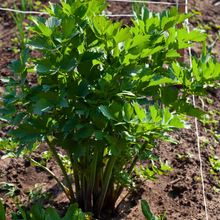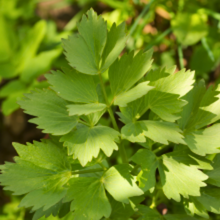Levisticum officinale, commonly known as lovage, is a tall, herbaceous perennial valued for its aromatic leaves, stems, and roots, which have both culinary and medicinal uses. This plant features large, glossy, dark green leaves that resemble celery or parsley and produces clusters of small, yellowish-green flowers in summer, followed by seeds that can also be used as a spice. Its robust growth and distinctive flavour make it a valuable addition to herb gardens and kitchen gardens, adding a touch of unique flavour to various dishes. It belongs to the Apiaceae family.
Origin: Levisticum officinale is native to southern Europe.
Light: Levisticum officinale thrives in full sun to partial shade. It prefers at least 6 hours of sunlight per day for optimal growth.
Water: Water regularly, especially during dry periods. Lovage prefers consistently moist, well-drained soil. Avoid waterlogging, which can lead to root rot.
Soil: Levisticum officinale prefers fertile, well-drained soil that is rich in organic matter. It can tolerate a range of soil pH, but prefers slightly acidic to neutral conditions.
Fertilising: Feed your Levisticum officinale with a balanced fertiliser in spring and again in mid-summer.
Pruning: Remove flower stalks after blooming to prevent seed formation and encourage foliage growth. You can also cut back the plant in autumn after flowering.
Pests and Diseases: Levisticum officinale is generally pest and disease resistant, but keep an eye out for slugs, snails, and carrot root fly.
Uses: Levisticum officinale is primarily grown as a culinary herb. Its leaves, stems, roots, and seeds are used to flavour soups, stews, broths, and other dishes. It has also been traditionally used for medicinal purposes.
Toxicity: Levisticum officinale is generally considered non-toxic to humans and pets. However, it is always best to keep plants out of reach of pets and children who might try to eat them in large quantities. Also, some people may experience photosensitivity after handling the plant.



